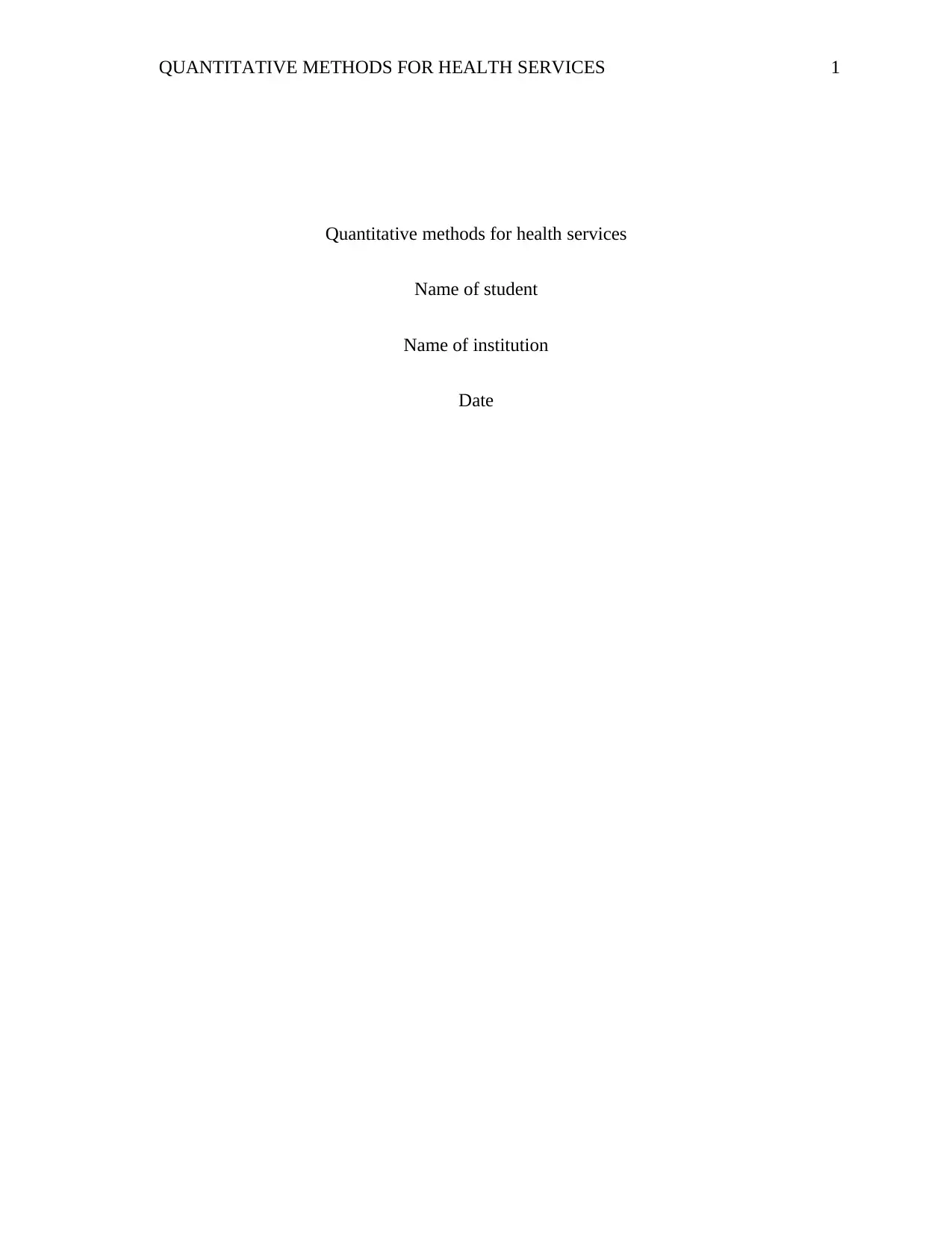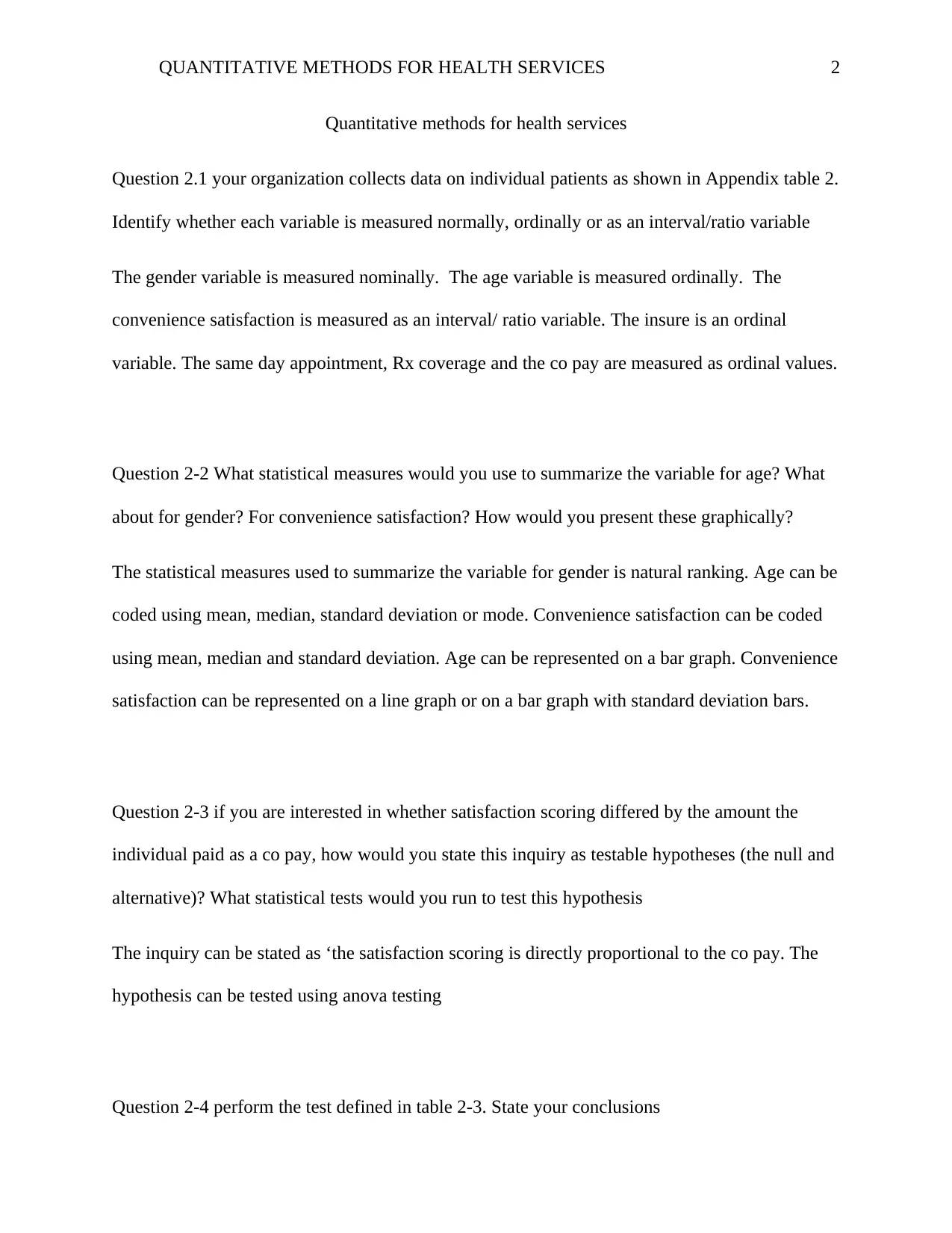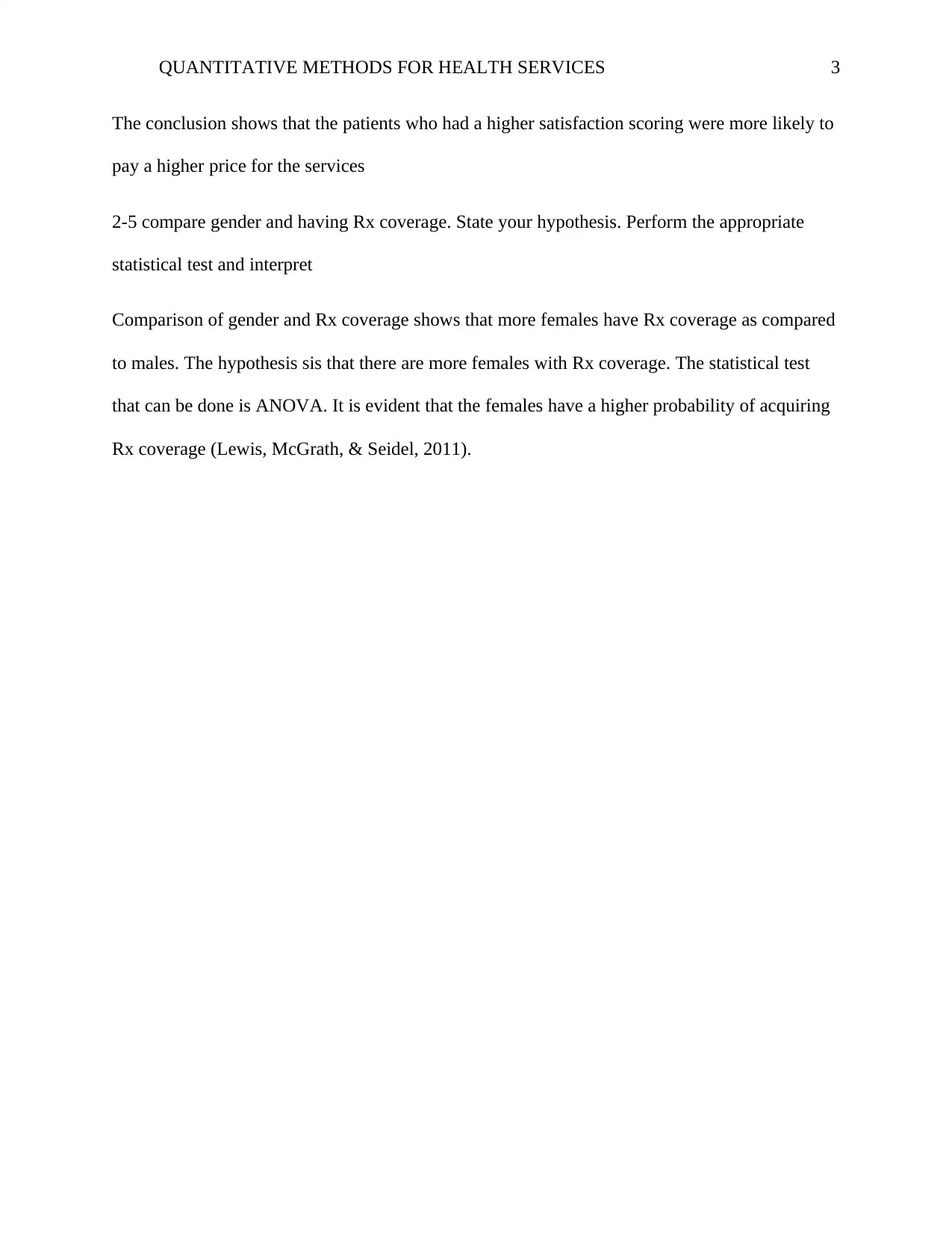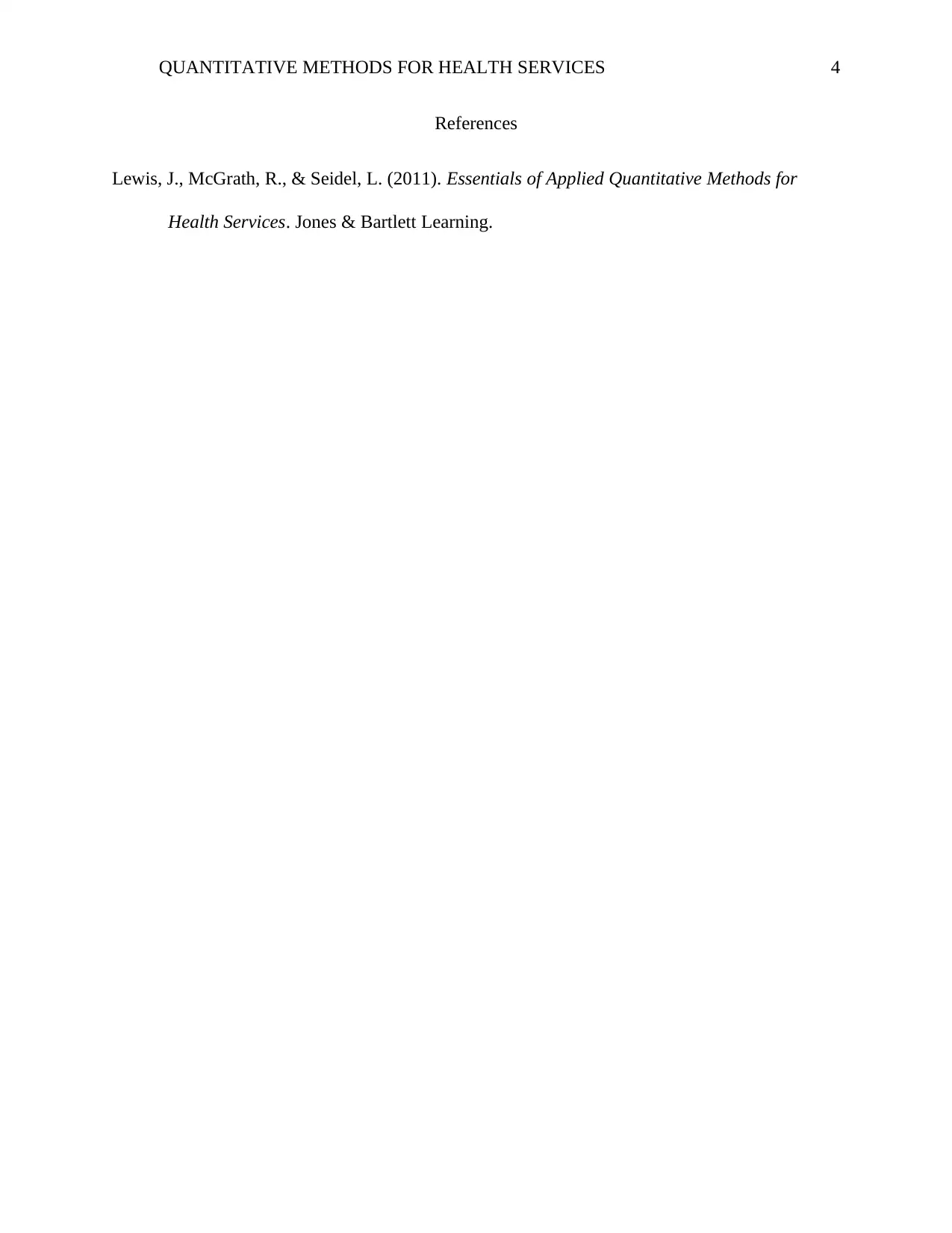Quantitative Methods for Health Services - Assignment Analysis
VerifiedAdded on 2022/09/18
|4
|427
|33
Homework Assignment
AI Summary
This assignment solution addresses a quantitative methods assignment in health services, focusing on data analysis and interpretation. The assignment explores different aspects of health services, including gender, age, convenience satisfaction, and Rx coverage. The solution involves identifying variable types, suggesting statistical measures, and performing hypothesis testing. The document details the use of ANOVA and other statistical methods to analyze data and draw conclusions. The solution also covers the creation of hypotheses and the interpretation of results, providing insights into patient satisfaction, co-pay, and Rx coverage. The assignment utilizes the provided data to explore relationships between variables and to demonstrate understanding of quantitative methods in a healthcare context.
1 out of 4







![[object Object]](/_next/static/media/star-bottom.7253800d.svg)